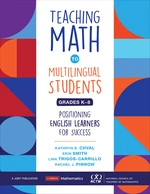Using strengths-based approaches to support development in mathematics Itâs time to re-imagine whatâs possible and celebrate the brilliance multilingual learners bring to todayâs classrooms. Innovative teaching strategies can position these learners as leaders in mathematics. Yet, as the number of multilingual learners in North American schools grows, many teachers have not had opportunities to gain the competencies required to teach these learners effectively, especially in disciplines such as mathematics. Multilingual learnersâhistorically called English Language Learnersâare expected to interpret the meaning of problems, analyze, make conjectures, evaluate their progress, and discuss and understand their own approaches and the approaches of their peers in mathematics classrooms. Thus, language plays a vital role in mathematics learning, and demonstrating these competencies in a second (or third) language is a challenging endeavor. Based on best practices and the authorsâ years of research, this guide offers practical approaches that equip grades K-8 teachers to draw on the strengths of multilingual learners, partner with their families, and position these learners for success. Readers will find: ⢠A focus on multilingual students as leaders⢠A strength-based approach that draws on studentsâ life experiences and cultural backgrounds⢠An emphasis on maintaining high expectations for learnersâ capacity for mastering rigorous content⢠Strategies for representing concepts in different formats ⢠Stop and Think questions throughout and reflection questions at the end of each chapter⢠Try It! Implementation activities, student work examples, and classroom transcripts
Price history
Oct 25, 2021
€25.45

